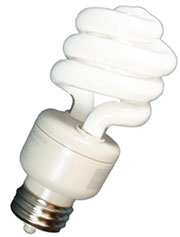The university spends nearly $10 million per year on utilities, so we can all do our part to help reduce energy consumption on campus. The cost savings associated with conserving electricity, natural gas and water could be significant over the course of a year. For example, the U.S. Department of Energy estimates that turning off computers, monitors and peripherals when not in use could save $50 per computer per year. If 6,000 computer users on campus made this simple change, it could result in a savings of up to $300,000 per year.
Here are some other suggestions for ways that members of the campus community can take an active role in becoming more efficient and sustainable in their energy usage:
Electricity
Any immediate reduction in electricity consumption is going to come from the efforts of individual building users. Residents and employees should consider turning off their room or office lights when they leave. Building users also can turn off lights in classrooms, lounges, restrooms and other public areas when unoccupied.
|
A donation of 5,000 compact fluorescent lamp bulbs from Arizona Public Service last fall is being put to use across campus. About 2,500 of the bulbs were made available to NAU students moving into campus at the beginning of the fall semester. If all 5,000 bulbs are put into use, the university could save up to $150,000 on its electric bill over the next 10 years. Anyone interested in swapping out incandescent bulbs on campus for more energy-efficient CFL bulbs should call (928) 523-4227.
Natural Gas
Natural gas is used primarily for heating buildings and water across campus. All but 13 buildings on campus are heated by radiators, air handling units or gas-fired boilers or heaters. Newer buildings have modern heating controls that automatically set back the temperature for non-operating hours. Older academic and administrative buildings use a thermostat to maintain a consistent temperature throughout the building. To incur savings, thermostats in individual buildings can be set back 3 to 5 degrees.
In terms of student housing, traditional residence halls do not have individual thermostats; the halls are set to a constant level, which fluctuates depending on one’s location in the building. The best thing students can do is to keep their room windows closed, since opening them causes the system to pump out more hot air to compensate for the air lost to the outside.
Water
Conserving water is probably the one area campus residents have the most control over. Students in particular can do their part by reducing the length of their showers, which would conserve both water and the natural gas needed to heat it.
NAU’s Office of Sustainability has a Green Practices Guide that offers a number of other tips for reducing resource use and waste production on campus. Readers will find computing and printing tips, green mailing and packaging ideas, suggestions for transportation and commuting, and even ideas for becoming a sustainable consumer.



